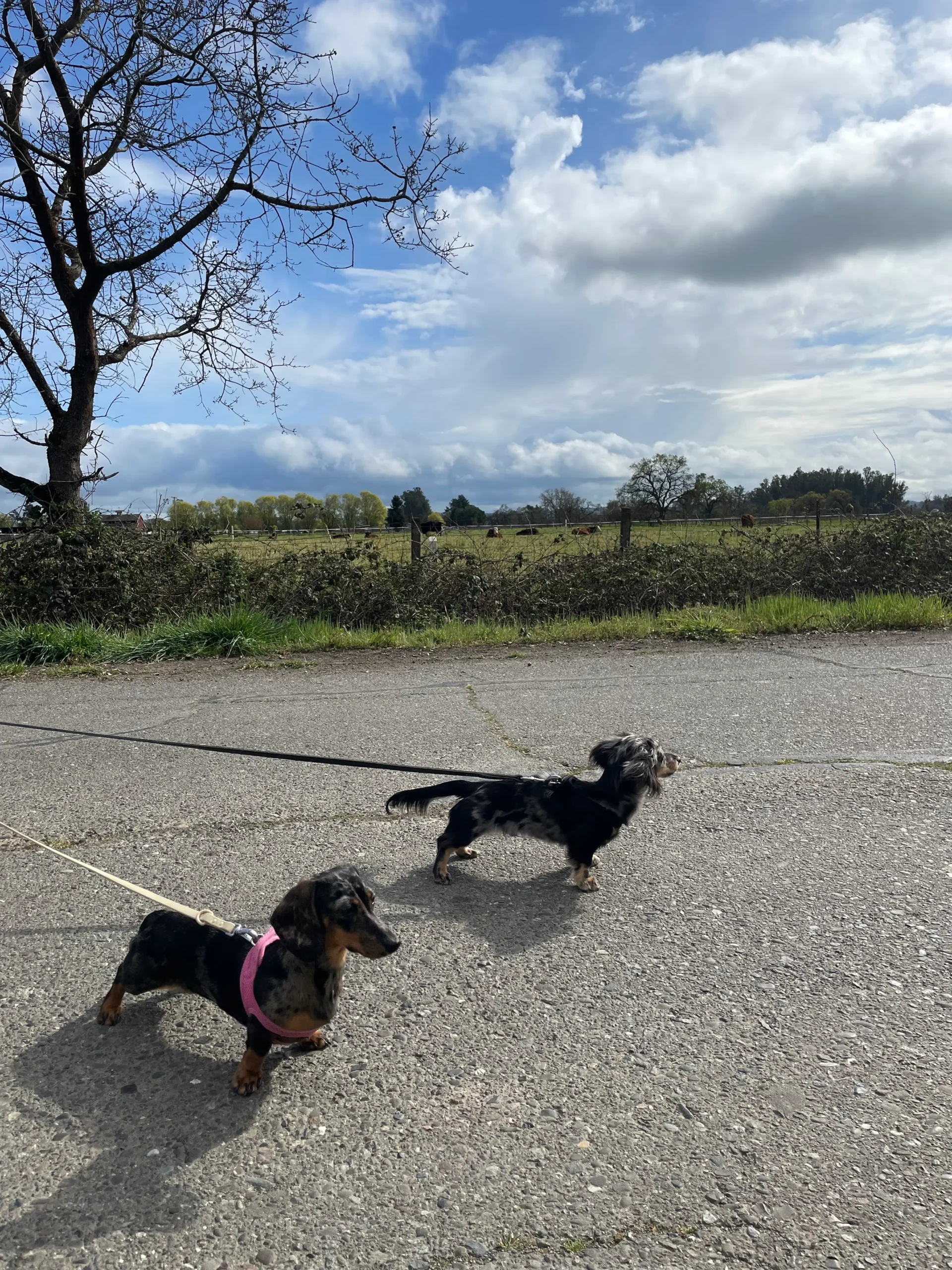Dachshunds are charming, spirited, and loyal companions known for their long bodies and playful personalities. However, one common behavioral challenge owners face is leash pulling during walks. Dachshunds, with their strong hunting instincts and curious nature, may find it difficult to stay by your side. Training your dachshund to walk politely on a leash not only makes walks more enjoyable but also strengthens the bond between you and your furry friend. This article explores effective methods to train dachshunds not to pull, including innovative techniques like changing direction to keep them attentive.
Understanding Why Dachshunds Pull
Before diving into training methods, it’s essential to understand why dachshunds tend to pull on the leash:
Hunting Instincts
Dachshunds were originally bred to hunt badgers and other burrowing animals. Their strong prey drive can make them eager to chase after scents and sights, leading to pulling.
Stubbornness and Independence
Dachshunds are known for their independent nature. This trait can sometimes manifest as stubbornness during training, making consistent leash manners a challenge.
Excitement and Curiosity
Their playful and curious demeanor means dachshunds are often easily distracted by their surroundings, prompting them to pull towards interesting stimuli.
Effective Methods to Train Dachshunds Not to Pull
Training your dachshund to walk without pulling requires patience, consistency, and the right techniques. Below are proven methods to help achieve a leash-free stroll experience.
1. The Direction Change Method
One of the most effective ways to prevent your dachshund from pulling is by keeping them attentive to your movements. This method involves changing direction whenever your dachshund starts to pull, ensuring they stay close to you.
How It Works:
- Stay Observant: Pay attention to your dachshund’s behavior while walking. When you notice them starting to pull ahead, prepare to change direction.
- Change Direction Promptly: Swiftly turn and walk in the opposite direction. This unexpected change signals to your dachshund that pulling won’t get them where they want to go.
- Maintain Calmness: Avoid making sudden or sharp turns that could startle your dachshund. Instead, smoothly change direction to keep the training positive.
Benefits:
- Keeps Them Attentive: Your dachshund learns to stay focused on your movements, reducing the tendency to pull.
- Reinforces Leadership: Consistently changing direction establishes you as the leader, encouraging your dachshund to follow your lead.
2. Positive Reinforcement
Positive reinforcement is a cornerstone of effective dog training. Rewarding desirable behavior encourages your dachshund to repeat it.
How to Implement:
- Use Treats and Praise: When your dachshund walks beside you without pulling, offer a treat or verbal praise. This association makes walking calmly rewarding.
- Timing is Crucial: Provide rewards immediately after your dachshund exhibits the desired behavior to reinforce the connection between the action and the reward.
- Be Consistent: Ensure that rewards are given consistently during training sessions to establish clear expectations.
3. Proper Leash and Harness Selection
The right equipment can significantly impact your dachshund’s leash behavior.
Recommendations:
- No-Pull Harness: A no-pull harness distributes pressure evenly across your dachshund’s body, discouraging pulling without causing discomfort.
- Avoid Retractable Leashes: Retractable leashes can encourage pulling by giving your dachshund too much freedom. Opt for a standard 4-6 foot leash for better control.
4. Teach Loose Leash Walking
Training your dachshund to walk with a loose leash is fundamental to preventing pulling.
Steps to Follow:
- Start Indoors: Begin training in a distraction-free environment. Encourage your dachshund to walk beside you with the leash slack.
- Use Commands: Introduce a command like “heel” or “let’s go” to signal your dachshund to stay by your side.
- Reward Compliance: When your dachshund walks without tension on the leash, reward them with treats and praise.
- Gradually Increase Distractions: Once your dachshund is consistent indoors, practice in environments with more distractions, such as parks or busy streets.
5. Consistent Training Sessions
Short, frequent training sessions yield better results than long, infrequent ones.
Tips for Success:
- Keep Sessions Short: Aim for 5-10 minute training sessions to maintain your dachshund’s focus and prevent boredom.
- Practice Regularly: Incorporate training into daily walks to reinforce good leash behavior consistently.
- Stay Patient: Progress may be gradual. Celebrate small victories and remain patient throughout the training process.
6. Socialization and Exposure
Proper socialization helps your dachshund become accustomed to various environments, reducing the urge to pull out of excitement or fear.
Strategies:
- Introduce New Environments: Gradually expose your dachshund to different settings, such as parks, sidewalks, and pet-friendly stores.
- Encourage Positive Experiences: Ensure that each new experience is positive by offering treats and praise, helping your dachshund associate walks with pleasant outcomes.
7. Seek Professional Help if Needed
If you’re struggling to curb your dachshund’s pulling behavior, consider seeking assistance from a professional dog trainer or behaviorist.
Benefits of Professional Training:
- Expert Guidance: Professionals can provide tailored strategies based on your dachshund’s specific needs.
- Structured Training Plans: They offer structured programs that ensure consistent and effective training.
- Support and Motivation: Professional trainers can offer the support and motivation needed to stay committed to training goals.
Additional Tips for Success
- Stay Calm and Assertive: Your dachshund can sense your emotions. Staying calm and assertive reinforces your role as the leader.
- Avoid Punishment: Negative reinforcement can create fear and anxiety, worsening leash-pulling behavior. Focus on positive methods instead.
- Be Patient: Training takes time. Consistency and patience are key to achieving lasting results.
Conclusion
Training your dachshund not to pull requires a combination of understanding their unique traits, implementing effective training methods, and maintaining consistency. Techniques like the direction change method keep your dachshund attentive and responsive, while positive reinforcement encourages desirable behavior. Selecting the right equipment, such as a no-pull harness, and practicing loose leash walking are essential steps toward enjoyable and stress-free walks. Remember, patience and persistence are crucial, and seeking professional help can provide additional support when needed. By dedicating time and effort to training, you and your dachshund can enjoy harmonious walks, strengthening the bond you share and enhancing your overall relationship.



